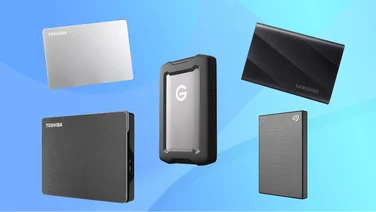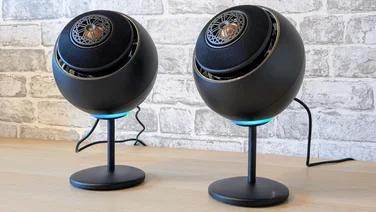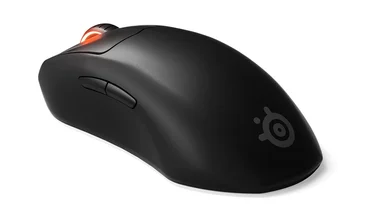To help us provide you with free impartial advice, we may earn a commission if you buy through links on our site. Learn more

- Convenient 2-in-1 concept
- Sleek design
- Slow read and write speeds for an SSD
Think of accessories you’d want for a laptop and, after a case and a mouse, two that would probably pop into your head are a USB hub and an external storage drive.
The former is becoming increasingly necessary, as ultraportables continue to ditch full-size USB connectivity in favour of smaller USB-C ports that can help keep chassis dimensions slim. External storage also remains a cost-effective tool for ensuring you have adequate space, as upgrading from a 256GB laptop to a model with a 512GB SSD inside can add hundreds of pounds to the price.
MINIX Neo Storage review: Features
Combining the two is therefore a rather brilliant idea, the kind that makes you wonder why nobody thought of it before the Minix Neo Storage showed up. This multiport hub connects via USB Type-C and provides two USB3 ports, an HDMI output capable of 4K resolution at 30Hz and a Type-C port of its own, although this is only for connecting the laptop’s charging cable so you can refuel while the hub is in use. You can’t use it to connect or charge an external Type-C device. All the while, it contains your choice of a 120GB or 240GB M.2 SSD, to use exactly as you would any other external SSD.
The Neo Storage is “designed exclusively” for Apple’s MacBook and MacBook Pro laptops, and it shows. The rounded corners and grey, matt aluminium finish clearly evoke more recent MacBook designs, and the Type-C connector is a perfect fit: the MacBook is notoriously devoid of full-size USB ports, relying entirely on Thunderbolt 3 connectors instead.
You can, however, still use the Neo Storage with a Windows PC or laptop, although functionality will vary depending on what kind of Type-C port you’re using. A standard Type-C port will, as we’ve discovered, let you use both USB3 ports and the internal SSD as normal, but the HDMI port becomes useless if the port can’t carry video. A full-fat Thunderbolt 3 port is better, as video support is guaranteed. That the Neo Storage is only at its best with Thunderbolt 3 makes sense given its inclusion of a video port, although as a storage device, this brings it into the orbit of exclusively Thunderbolt 3-compatible drives such as the Samsung X5. This makes for somewhat awkward comparisons, as Minix itself only claims maximum read and write speeds of 400MB/sec each. That’s a fraction of what the X5 can do, and that’s only the 240GB model of the Neo Storage; the 120GB model is rated at a maximum of 350MB/sec.
MINIX Neo Storage review: Performance
In fairness, the 240GB Neo Storage came decently close its advertised write speed, hitting 373MB/s in the CrystalDiskMark sequential test. Its read speed result, on the other hand, was a very modest 300MB/sec, and switching to the more demanding 4K test saw the SSD drop down to a 103MB/sec read speed and a 100MB/sec write speed.

Interestingly, read and write speeds swapped around in our own file transfer tests, with read taking the lead. Starting with the huge file test, the Neo Storage averaged a read speed of 343MB/sec and a write speed of 277MB/sec – faster than any mechanical hard disk, but not terribly rapid for an SSD.
At least the tougher large files test caused only a slight fall in pace, with an average read speed of 333MB/s and a write speed of 266MB/s. Even so, it wasn’t until the small files test where the Neo Storage finally caught up with budget SSD standards, averaging a 224MB/s read speed and a 152MB/s write speed. These results are, again, nothing special, but they are comparable with the Adata SD600Q.
Sadly, this also raises a new problem: the SD600Q’s mediocre speeds are forgivable because it’s so cheap, with a 240GB model costing £38; the equivalent Neo Storage is more than twice as expensive. Yes, this does have Type-C connectivity and USB hub capability, but you could buy a separate Mac-friendly hub along with the SD600Q and still save about £40.
That said, the entire point of the Neo Storage is to combine the two, saving you the trouble of having to carry around multiple accessories along with your laptop, or even just saving clutter on your desktop. Type-C port pickiness aside, this means it has value outside of its core SSD performance. It’s well made, too, being light, stylish and slim all at once, and there’s a nice carry case included in the box.
MINIX Neo Storage review: Verdict
We can’t recommend it on monetary grounds, nor performance grounds, and if you’re more concerned with adding connectivity than storage, you could spend a lot less money on something with a lot more than two USB3 ports. With all that in mind, however, this is a truly unique storage product, and even if it is on the slow side, that doesn’t entirely spoil the convenience of its 2-in-1 concept.







